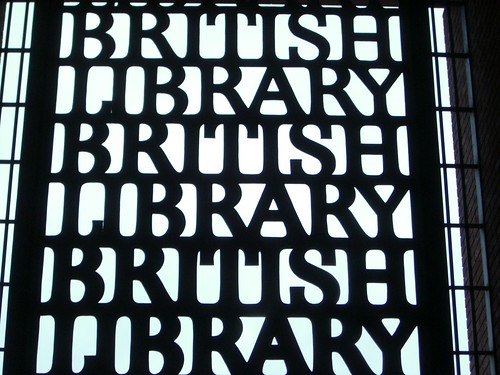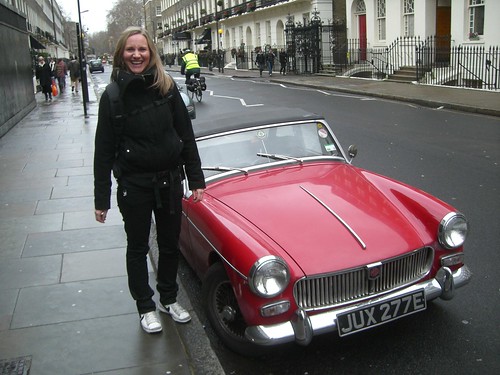Today Yvonne and I went to London in search of Indian newspapers. Specifically, she was looking for examples in the Telugu language, and I was looking for Hindi. I was quite lucky to be with Yvonne, actually. She already knows the city quite well, and has been to the research locations before.
First we went to the British Library. To enter their reading rooms, you need to get a special photo ID pass. Yvonne already had one, and this process went very efficiently for me. I filled out a form on a computer with my name, address, study information, etc., and then showed a lady at the desk my passport, Maryland driver’s license, student ID, and my television license (which proved my home address). Afterwards, she took my picture and printed out a plastic card for me.
Card in hand, Yvonne and I went upstairs to our requisite reading room. We got the low-down on Indian newspapers from a member of the library staff.
- Indian (and other Asian) newspapers are only viewable on microfilm. The originals are not available for handling.
- English-language Indian newspapers—even dailies—are delivered regularly, but it takes time for them to be converted to film. For example, we visited on 18 January 2008, and our guide said that it was unlikely that the film reels for 2007 were available yet.
- For Telegu, they had seven newspaper titles in their catalog, but none were more recent than the 1990s.
- For Hindi, they had 14 newspaper on record, but not recent issues. Nothing after the 1960s, in fact.
- They do have some cool things, though. For instance: numbers 1, 3, and 5 (1918) of The Palestine news, a Hindi-language newspaper printed in Cairo. Must have been a British Empire thing, I guess.
Afterwards, we walked to SOAS… a word you hear mentioned a lot at Reading. One imagines it to be a daunting place were well-dressed scholars go for tea and discussion. It turns out that SOAS is just the acronym for the School or Oriental and African Studies, part of the University of London. They have their own library, which somehow is warmer than any sauna I’ve ever been in.
The library keeps newspapers on its top floor, but not very many. No Hindi or Telugu papers. They did have one Bengali-language newspaper, the Janomat Bengali newsweekly (see image above). This is a UK paper. From India, they have The Hindu, which is printed in English.
SOAS receives issues of Hindi-language edition of India Today, and has archives on the shelves going back to 1997. India Today publishes in other languages, including English (their main website seems to be in English). You can view current issues of the Hindi edition online as an e-paper.
After lunch and a short detour to Collinge & Clark – a used book store with very many type books – we went to the Royal Asiatic Society. A member of the SOAS library staff had recommended this to Yvonne, and it turned out to be a great idea. The society is located in a non-discrete building off of Euston, not far from either SOAS or the British Library. There, we were assisted by a very helpful curator. Although the society does not have new newspapers either, the curator did arrange an appointment for us with someone at the Nehru Centre for later on that very afternoon.
The Nehru Center is the cultural wing of the High Commission of India. During our meeting there, we were informed that the centre no longer gets Indian newspapers delivered to it anymore. It doesn’t make much budgetary sense… they read all the newspapers online in real time anyway. I got a list of websites of Hindi-language newspapers, and this is helpful—especially since some newspapers have e-papers that show the fonts used in the print edition. Yvonne and I were very careful to try and drive home that to make real analysis of typefaces in use, we need to look at and touch real newspapers, and see how the letterforms and white spaces are effected by the paper, the ink, the printing, colour, etc. I hope that we weren’t boring; you know how type designers can get! Nevertheless, I think that our meeting may result in further information or assistance, and it was also fantastic fun, so I am glad that we had it.
Yvonne and I arrived back in Reading about 11 and a half hours after we had left it. We hadn’t found any current Hindi or Telugu newspapers.


